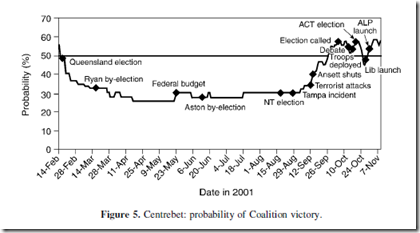Don Arthur alerts me to a new report from MDRC (the organisation that administers many of the US randomised trials) on Opportunity NYC, a conditional cash transfer program in New York city that’s based loosely on the Mexican Progresa/Oportunidades program. Here’s the overview:
In 2007, New York City’s Center for Economic Opportunity launched Opportunity NYC–Family Rewards, an experimental, privately funded, conditional cash transfer (CCT) program to help families break the cycle of poverty. CCT programs offer cash assistance to reduce immediate hardship, but condition these transfers on families’ efforts to build up their “human capital,” often by developing the education and skills that may reduce their poverty over the longer term. Family Rewards is the first comprehensive CCT program in a developed country.
Aimed at low-income families in six of New York City’s highest-poverty communities, Family Rewards ties cash rewards to pre-specified activities and outcomes in children’s education, families’ preventive health care, and parents’ employment. The three-year program is being operated by Seedco — a private, nonprofit intermediary organization — in partnership with six community-based organizations. It is being evaluated by MDRC through a randomized control trial involving approximately 4,800 families and 11,000 children, half of whom can receive the cash incentives if they meet the required conditions, and half who have been assigned to a control group that cannot receive the incentives. This report presents initial findings during the program’s early operating period.
Key Findings
Despite initial challenges in understanding the program’s large number of incentives and related payment requirements, nearly all families eventually earned rewards — more than $6,000, on average, over the first two years. In addition, effects from Family Rewards varied across a wide range of outcome measures — for example, the program:
? Reduced current poverty and hardship, including hunger and some housing and health care hardships
? Increased savings and the likelihood that parents would have bank accounts, and reduced the use of alternative banking institutions (such as check cashers)
? Did not improve school outcomes overall for elementary or middle school students, but did increase school attendance, course credits, grade advancement, and standardized test results among better-prepared high school students
? Somewhat increased families’ continuous use of health insurance coverage, reduced their reliance on hospital emergency rooms for routine care, and increased their receipt of medical care
? Substantially increased families’ receipt of preventive dental care
? Increased employment in jobs that are not covered by the unemployment insurance (UI) system but reduced employment in UI-covered jobs
Because only the first 12 to 24 months of the program are covered — including a “start-up” phase during which operational “kinks” were being worked out — it is too soon to draw firm conclusions about the full potential of Family Rewards. Future reports will present longer-term findings, eventually covering all three years of program operations plus two additional years after the cash incentives are no longer offered.
Or to put it in context:
The findings indicate that Family Rewards led to small increases in elementary and middle school students’ participation in extracurricular activities and in the extent to which their parents were engaged with their schooling, but it had few effects on attendance or test scores. Among the older students, the program led to large and consistent gains in school progress for a subgroup of more academically prepared ninth-graders. For students in that subgroup, who may have been in a better position to take advantage of the incentives, the program increased attendance and school progression, namely promotion to the tenth grade and number of credits earned. These effects are encouraging and on a par with those found from other, more intensive, school-based interventions
The really interesting question will be whether these impacts are sustained when the cash stops flowing. Nonetheless, the early results are pretty encouraging, and suggest that these kids of innovative programs are at least worth considering in Australia, particularly for Indigenous communities.
Update: The NYT reports that the results have been too modest for NYC to make this a publicly-funded program (HT: AK).




